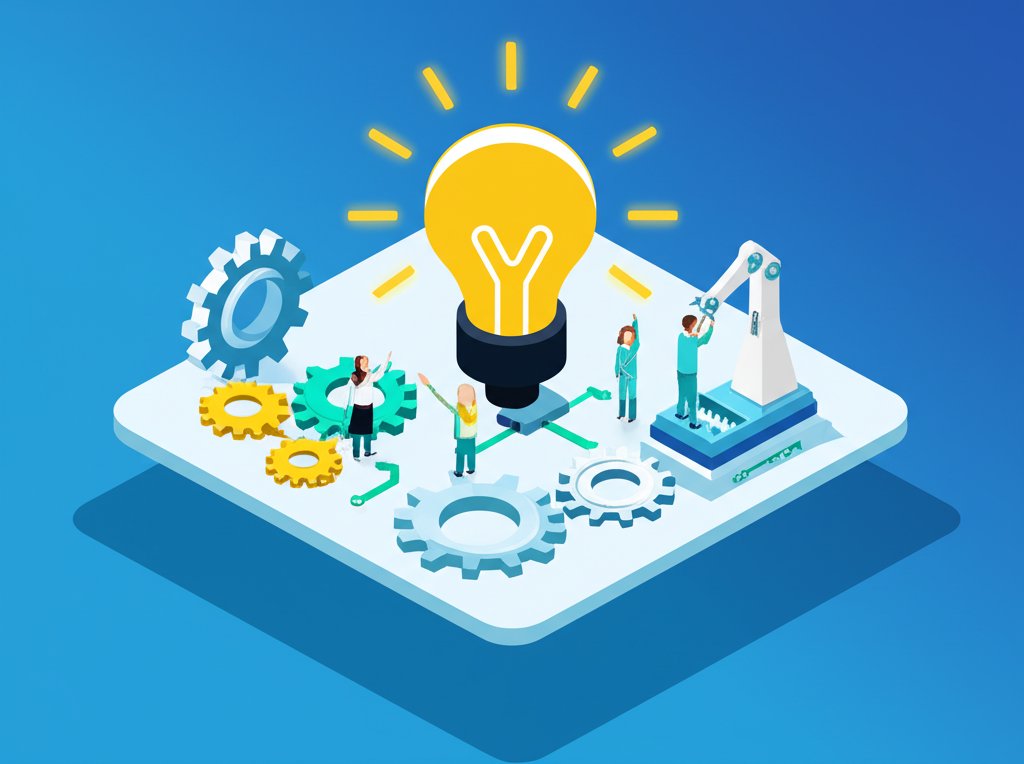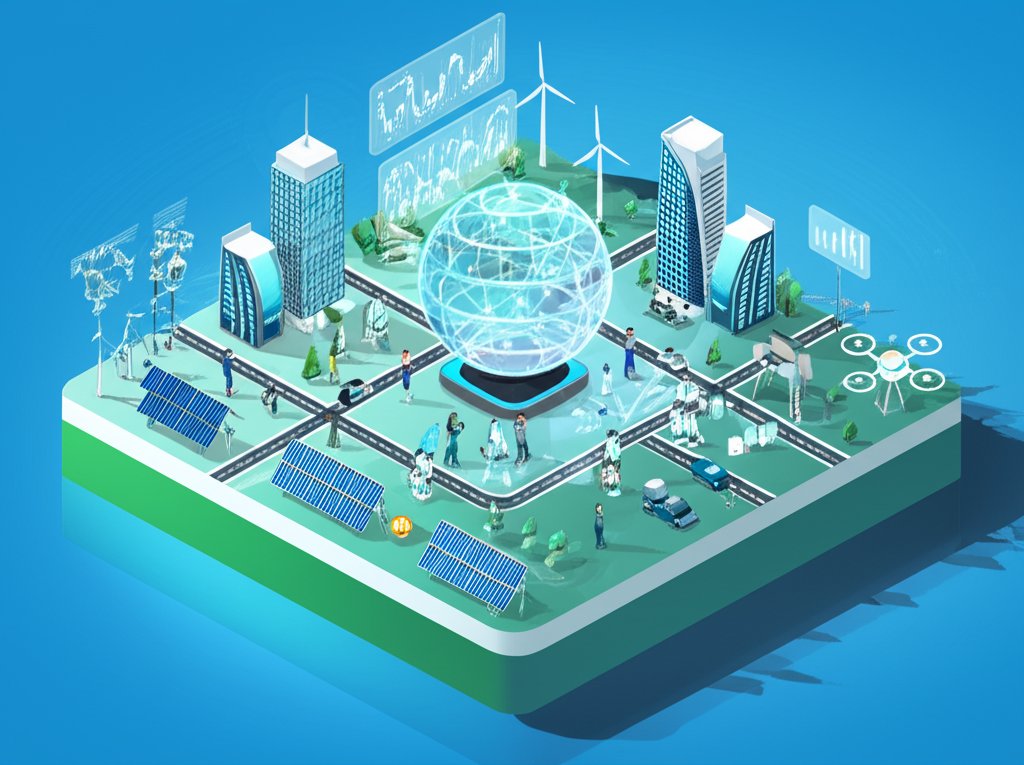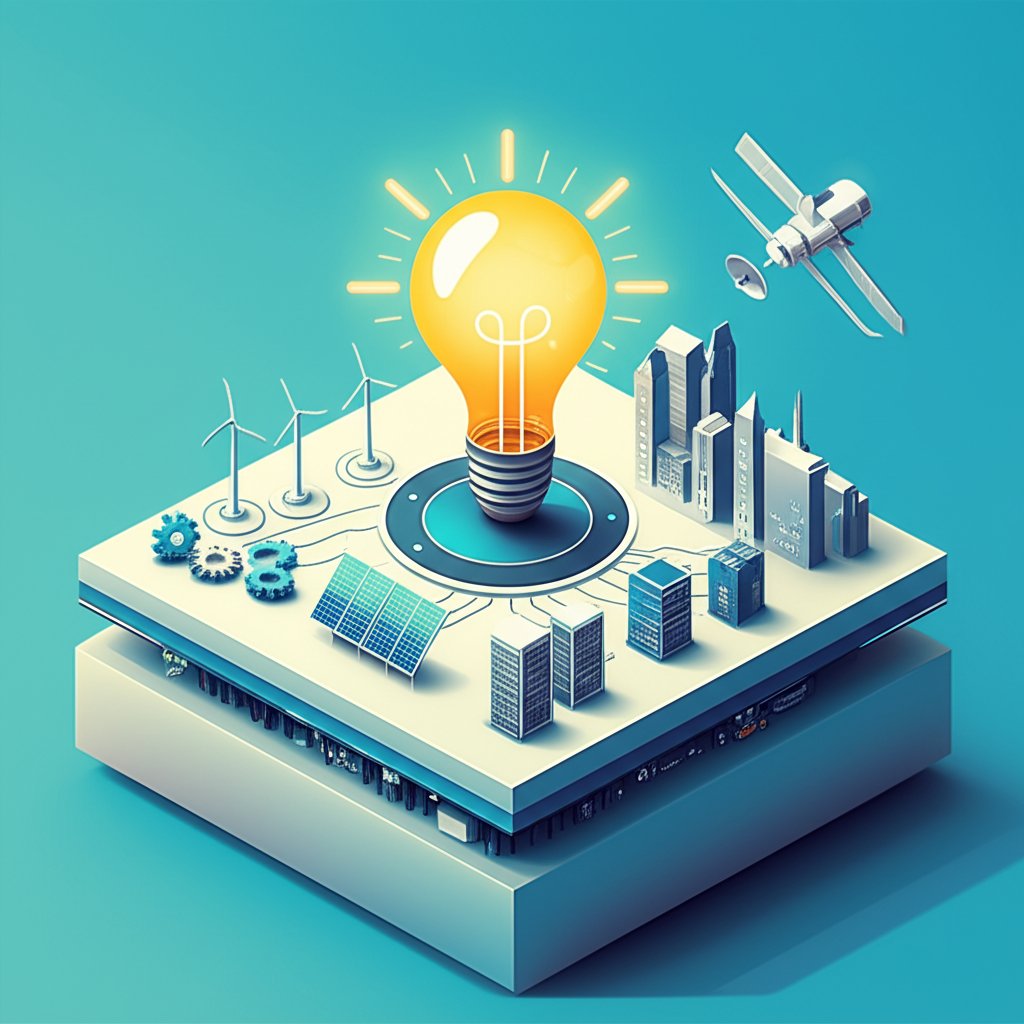Embark on an epic journey through history, tracing the profound impacts of pioneering inventions that ignited humanity’s progress and undeniably forged the modern world. From the earliest sparks of ingenuity to the complex systems of today, countless forefathers and foremothers dared to dream, experiment, and revolutionize, laying the bedrock for our global society. This article delves into the transformative power of their innovations and the enduring technology they introduced, revealing how their brilliant minds continue to shape our daily lives, connect continents, and drive human potential forward. Prepare to uncover the stories behind the breakthroughs that define our era, ensuring you grasp the immense scale of their legacy.
The Dawn of the Digital Age: Computing Innovations That Redefined Reality

The very fabric of our modern world is interwoven with the threads of computational technology. Before smartphones, laptops, and the internet, visionary forefathers conceptualized machines that could process information, fundamentally altering how we interact with data and each other. These innovations didn’t just automate tasks; they birthed entirely new industries and ways of thinking.
From Babbage’s Engines to Lovelace’s Algorithms
At the vanguard stood Charles Babbage, often hailed as the “Father of the Computer.” In the 19th century, his theoretical designs for the Difference Engine and the Analytical Engine were groundbreaking. These were mechanical behemoths, intended to perform complex calculations far beyond human capability. While largely unbuilt in his lifetime, Babbage’s intricate blueprints contained the conceptual framework of a general-purpose computer: a mill (CPU), a store (memory), and input/output mechanisms.
His collaborator, Ada Lovelace, Lord Byron’s daughter, transcended mere assistance. Recognizing the Analytical Engine’s potential beyond simple arithmetic, she penned algorithms designed to be executed by the machine for tasks like generating Bernoulli numbers. This made her the world’s first computer programmer, her insights revealing the profound future possibilities of computation and the abstract nature of software, distinguishing it from the hardware. Their combined intellectual efforts were primal inventions that paved the way for the digital modern world.
The Birth of Human-Computer Interaction: Engelbart’s Mouse
As computing evolved, the need for intuitive interaction became paramount. In the 1960s, Douglas Engelbart spearheaded a vision of augmenting human intellect through interactive computing. His 1968 “Mother of All Demos” introduced several radical innovations, including hypertext, networked computers, and, most famously, the computer mouse. This small, wheeled device transformed complex command-line interfaces into accessible graphical environments. Engelbart’s mouse, a humble physical invention, democratized access to computer technology, making it an indispensable tool for everyone, from academics to everyday users, facilitating rapid adoption in the burgeoning digital landscape.
Connecting the Globe: Berners-Lee and the World Wide Web
No single invention has had a more profound impact on global connectivity and information access than the World Wide Web. In the late 1980s, Tim Berners-Lee, a software engineer at CERN, envisioned a “universal information space” where researchers could easily share and link documents across different computer systems. His development of HTML (HyperText Markup Language), HTTP (HyperText Transfer Protocol), and URLs (Uniform Resource Locators) formed the foundational technology of the Web. Launched publicly in 1991, the World Wide Web rapidly transformed into a global phenomenon, connecting billions, fostering unprecedented communication, and reshaping commerce, education, and culture, effectively creating the truly interconnected modern world we inhabit today. These innovations continue to evolve, demonstrating the dynamic nature of digital progress.
Revolutionizing Communication: Bridging Distances Through Technology
The human desire to communicate across distances has driven some of the most impactful inventions in history. From the first whispered words carried by electrical impulses to images broadcast across continents, forefathers of communication technology have shrunk the globe, allowing for instant connections that once seemed like magic. These innovations were critical in shaping the social and economic structures of the modern world.
Bell’s Telephone: The First Voice Across Wires
Before the digital age, communication was radically transformed by the telephone. Alexander Graham Bell’s successful transmission of speech over electrical wires in 1876 marked a watershed moment. His invention allowed for direct, real-time voice communication, overcoming geographical barriers that had previously necessitated letters or telegrams. The telephone rapidly became a cornerstone of business and personal life, enabling quicker decision-making and fostering relationships in ways previously impossible. Bell’s fundamental technology paved the way for every subsequent advance in voice communication.
Marconi and the Wireless Leap: Radio Waves
Guglielmo Marconi’s pioneering work in wireless telegraphy at the turn of the 20th century was another monumental leap. While others experimented with radio waves, Marconi was the first to successfully transmit and receive radio signals over significant distances, including across the Atlantic Ocean in 1901. His innovations made possible instant communication without physical wires, a concept that seemed miraculous. Radio technology quickly evolved beyond telegraphy to broadcast voice and music, creating a new mass medium for entertainment, news, and even military communication, proving vital in both world wars and uniting nations within an increasingly globalized modern world.
Cooper’s Cellphone: Communication Untethered
The dream of truly mobile communication was realized in 1973 when Martin Cooper, then with Motorola, made the first public call on a handheld cellular phone. This groundbreaking invention freed communication from fixed lines, allowing people to talk on the go. While early cellphones were bulky and expensive, Cooper’s demonstration proved the viability of personal, portable telecommunication. The subsequent development and miniaturization of this technology led to the ubiquitous smartphones of today, fundamentally altering social interaction, business operations, and personal freedom, embodying a key aspect of the modern world.
Farnsworth’s Vision: The Electronic Television
The ability to transmit moving images into homes revolutionized entertainment and information dissemination. Philo T. Farnsworth, a self-taught inventor, achieved the first fully electronic television broadcast in 1927. His innovations in image scanning and display eliminated mechanical components, setting the standard for all future electronic television systems. Television rapidly became a powerful medium, shaping public opinion, delivering news, and creating shared cultural experiences on an unprecedented scale. These visual inventions dramatically transformed the media landscape, making it an integral part of the modern world’s daily rhythm.
Powering Progress: Essential Innovations in Energy and Industry
Beyond communication and computing, the modern world owes its very structure and convenience to fundamental inventions in energy generation, industrial processes, and transportation. These forefathers engineered solutions that dramatically enhanced productivity, illuminated our nights, and moved goods and people with astonishing efficiency, laying the groundwork for widespread prosperity and technological advancement.
Edison and Tesla: Lighting the Modern World
The battle for electrical supremacy between Thomas Edison’s direct current (DC) and Nikola Tesla’s alternating current (AC) system profoundly shaped the electrification of the modern world. Edison’s inventions included the practical incandescent light bulb, which brought safe, affordable electric light into homes and businesses, transforming daily life. His establishment of power stations marked the beginning of modern electrical grids.
However, it was Tesla’s innovations in AC power, including the polyphase system and the AC motor, that proved more efficient for long-distance transmission and large-scale industrial applications. AC technology became the standard for power distribution, allowing for the widespread electrification that fueled the Second Industrial Revolution and continues to power virtually every aspect of our lives today. These forefathers collectively illuminated cities and powered factories, their technology indispensable to our current infrastructure.
The Steam Engine: Fueling the Industrial Revolution
Long before electricity, the steam engine was the paramount invention that ushered in the Industrial Revolution, profoundly shaping the 18th and 19th centuries and setting the stage for the modern world. While early versions existed, James Watt’s improvements in the 1760s significantly increased the engine’s efficiency, making it a viable power source for factories, mines, and transportation. Steam power mechanized production, leading to mass manufacturing, urbanization, and a dramatic shift from agrarian to industrial economies. This foundational technology enabled subsequent innovations like the steam locomotive and steamboat, revolutionizing transport and trade.
Ford and Mass Production: Automobile Technology for the Masses
The automobile, while not a single invention, was transformed by Henry Ford’s innovations in production. While others built cars, Ford’s introduction of the assembly line in 1913 revolutionized manufacturing. This process drastically reduced the time and cost of producing vehicles, making the Model T affordable for the average family. Ford’s application of mass production technology not only democratized car ownership but also influenced manufacturing across countless industries worldwide. This approach to industrial innovations fundamentally altered labor practices, urban planning, and economic structures, solidifying the automobile’s place as a cornerstone of the modern world.
Advancements in Health and Well-being: Lifesaving Inventions
Beyond conveniences and connectivity, some of the most vital innovations from our forefathers have been in public health and medicine. These groundbreaking inventions have dramatically extended human lifespan, eradicated diseases, and improved the overall quality of life, demonstrating the profound impact of scientific inquiry and technology on human well-being.
Pasteur and Germ Theory: Revolutionizing Medicine
Before Louis Pasteur’s work in the mid-19th century, little was understood about the cause of disease. Pasteur’s meticulous experiments conclusively demonstrated that microbes were responsible for fermentation and spoilage, leading to his groundbreaking germ theory of disease. This fundamental scientific innovation revolutionized medicine and public health. It led to the development of pasteurization (a process to kill harmful bacteria in food and beverages), antiseptics (pioneered by Joseph Lister, building on Pasteur’s work), and vaccines. Pasteur’s insights transformed everything from surgical hygiene to food safety, directly saving countless lives and laying the scientific foundation for modern medical technology and sanitation.
Fleming’s Penicillin: The Age of Antibiotics
The accidental discovery of penicillin by Alexander Fleming in 1928 marked the dawn of the antibiotic age, one of the most significant medical inventions in human history. Fleming observed that a mold inhibited the growth of bacteria in his petri dish. While the widespread production and application of penicillin took over a decade, developed by Howard Florey and Ernst Chain, Fleming’s initial observation was the critical spark. This innovation provided a powerful weapon against bacterial infections that had plagued humanity for millennia, dramatically reducing mortality rates from diseases like pneumonia and sepsis. Antibiotics transformed medicine, allowing for complex surgeries and providing a safety net against infections, fundamentally altering health outcomes in the modern world.
Vaccines: Preventing Disease, Shaping Populations
The concept of vaccination, one of humanity’s most impactful public health innovations, dates back to Edward Jenner’s smallpox vaccine in 1796. Jenner, building on folk knowledge, observed that milkmaids exposed to cowpox were immune to smallpox. His empirical invention of inoculating a boy with cowpox to protect him from smallpox was a monumental leap. Over the centuries, further innovations in vaccine technology, spurred by forefathers like Pasteur (who developed vaccines for rabies and anthrax), have led to the eradication of smallpox and near-eradication of polio, protecting billions from debilitating and fatal diseases. Vaccines stand as a testament to scientific technology’s power to improve global health and shape human demographics, ensuring healthier populations in the modern world.
The Enduring Legacy: How Forefathers’ Innovations Continue to Shape Us
The narrative of pioneering inventions is not merely a collection of historical facts; it’s a living testament to the human spirit of inquiry and the cumulative power of technology. The forefathers whose innovations forged the modern world laid foundations so robust that their influence reverberates through every aspect of our contemporary existence. Understanding their contributions is crucial to appreciating the complex, interconnected global society we inhabit today.
Catalysts for Future Technology
Every breakthrough discussed, from the Analytical Engine to penicillin, served as a catalyst for subsequent innovations. Babbage and Lovelace’s theoretical framework for computing directly informed the electronic computers of the 20th century. Bell’s telephone technology paved the way for wireless communication and eventually the internet. Edison’s and Tesla’s work on electricity enabled every modern appliance and industry. These forefathers didn’t just solve problems; they opened doors to entirely new fields of scientific and technological exploration, demonstrating that true innovations inspire generations to build upon existing knowledge, pushing the boundaries even further. The “Modern World” is a continuous chain of iterative and revolutionary advancements.
Societal Transformation and Global Interdependence
The collective impact of these inventions led to unprecedented societal transformations. Mass communication fostered shared cultures and global awareness. Industrial technology led to urbanization, new labor structures, and economic growth, albeit with social challenges. Medical innovations allowed for population booms and healthier lives, reshaping societal demographics. These changes have created a deeply interdependent modern world, where events in one corner of the globe can rapidly affect others, thanks to the very technology developed by our forefathers. Globalization, a hallmark of the modern world, is a direct outcome of these profound innovations in communication and transportation.
Lessons from the Great Innovators
What can we learn from these forefathers? Their stories highlight key characteristics crucial for driving future innovations:
inventions were recognized or perfected.innovations were often driven by a desire to solve real-world problems and improve human conditions.These lessons are timeless, guiding new generations of scientists, engineers, and entrepreneurs as they confront the challenges of the 21st century, continuing to forge the modern world with fresh technology and inventions.
Conclusion: The Unfolding Tapestry of Innovation

The journey through the pioneering inventions of our forefathers reveals an astonishing tapestry of human ingenuity and resilience. From the theoretical elegance of Babbage’s computing to the life-saving impact of vaccines, their innovations in technology have not merely altered our environment but have fundamentally reshaped our capabilities, interactions, and aspirations. These visionaries didn’t just create gadgets; they forged the very foundation of the modern world, providing the tools and frameworks that define our globalized, interconnected, and technologically advanced society. Their legacies remind us that the spirit of invention is an enduring force, constantly pushing the boundaries of what is possible and inspiring us to continue the grand tradition of innovation for generations to come.
FAQ
Q1: Who are the key figures often considered the “forefathers” of modern technology and what were their primary innovations?
A1: Key forefathers include Charles Babbage (conceptual mechanical computer), Ada Lovelace (first computer programmer), Alexander Graham Bell (telephone), Guglielmo Marconi (radio), Thomas Edison (light bulb, DC electricity), Nikola Tesla (AC electricity), Louis Pasteur (germ theory, pasteurization), Alexander Fleming (penicillin), and Tim Berners-Lee (World Wide Web). Their primary innovations laid the foundational technology for computing, communication, energy, and medicine in the modern world.
Q2: How did their ingenious creations transform various aspects of our lives, including communication, productivity, and entertainment?
A2: These inventions dramatically transformed lives. Communication became instantaneous with the telephone and later the internet, shrinking distances. Productivity soared with industrial technology like the steam engine and assembly line, and with the advent of computing. Entertainment was revolutionized by radio and electronic television, bringing news and culture directly into homes, profoundly shaping the social landscape of the modern world.
Q3: What are the key characteristics that set these innovators apart and enabled them to achieve such groundbreaking success?
A3: These forefathers were characterized by profound curiosity, visionary thinking, and relentless perseverance. They dared to challenge existing norms, often working in isolation or against skepticism. Their success stemmed from a combination of scientific rigor, practical problem-solving, and the ability to envision how their innovations could fundamentally change society and build the modern world.
Q4: How can we draw inspiration from their legacies to foster continued innovation and solve pressing global challenges?
A4: We can draw inspiration by embracing curiosity, fostering interdisciplinary collaboration, persisting through failures, and seeking to apply technology and innovations to real-world problems. The forefathers teach us that groundbreaking solutions often arise from a deep understanding of fundamental principles combined with a bold vision for the future, essential for tackling today’s global challenges and continuing to evolve the modern world.
Q5: What are some specific examples of how their inventions have revolutionized our society and improved human well-being?
A5: Specific examples include the computer mouse making technology accessible to the masses, the World Wide Web connecting billions globally for information and commerce, electricity powering homes and industries, and medical innovations like vaccines and antibiotics drastically extending human lifespans and eradicating deadly diseases. These inventions from our forefathers have collectively fostered an interconnected, healthier, and more productive modern world.










